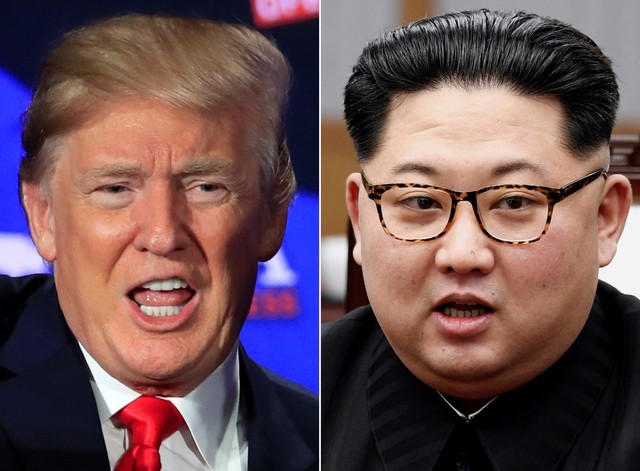 |
|
US President Donald Trump and North Korean leader Kim Jong-un will hold a historic North Korea-US summit on June 12 in Singapore. (AP)
|
Kim Jong-un’s visit to Singapore will be first time North Korean leader steps outside socialist bloc for diplomatic meeting since his grandfather Kim Il-sung
Following the selection of Singapore as the site of the first ever summit between the leaders of North Korea and the US, which is slated to be the “talks of the century,” the eyes and ears of the world are focusing on the groundbreaking choices by North Korean leader Kim Jong-un. This is the first time that North Korea’s supreme leader will venture outside the old socialist bloc to stand at the forefront of international diplomacy since Kim’s grandfather and North Korean founder Kim Il-sung attended a celebration of the 10th anniversary of the Bandung Conference in Indonesia in 1965, 53 years ago. “The US made the proposal and North Korea accepted it. I think that North Korea’s choice of Singapore can be taken as a sign of Kim’s confidence,” said Yang Moo-jin, a professor at the University of North Korean Studies, by way of explaining why the North Korea-US summit will be held in Singapore. North Korea reportedly kept pushing to hold the summit in Pyongyang, while Singapore was the site that Trump’s advisors insisted on. The North continued to prefer holding the meeting in Pyongyang, but Kim appears to have ultimately decided to accept the American request during US Secretary of State Mike Pompeo’s visit to North Korea on May 9. The fact that Kim agreed for the meeting to be held in Singapore, which is around 4,700km away from Pyongyang, is itself a bold innovation. Even though Singapore aspires to be “neutral ground” and has decent diplomatic relations with North Korea, Kim’s choice sets him apart from his father and former North Korean leader Kim Jong-il, who did not travel to countries other than the North’s traditional allies of China and Russia. Kim never even visited Seoul, as he had promised former South Korean President Kim Dae-jung during the first inter-Korean summit in 2000. In contrast, Kim Il-sung was a more active overseas goer. He visited China countless times both officially and unofficially, and in 1984 he went on a 46-day tour of the Soviet Union and eight countries in Eastern Europe. Kim made relatively frequent appearances on the international stage, including his attendance at the celebration of the 10th anniversary of the Asian-African Conference (also known as the Bandung Conference) for non-aligned states that was held in Bandung, Indonesia, in 1965. But since the US and the USSR were excluded from the Bandung Conference, this was a on a different level from Kim Jong-un’s decision to hold talks in a “third country” with the leader of the US, which has had “hostile relations” with the North for 70 years. “Aside from China, this is Kim Jong-un’s debut on the international diplomatic stage. He accepted the US’s demand so that he can look like the leader of a normal state,” said Cho Sung-ryul, senior research fellow for the Institute for National Security. In fact, Kim’s unconventional behavior was already on display at the inter-Korean summit on Apr. 27. He began to shake off his reputation as the “hermit dictator” during his summit with Chinese President Xi Jinping at the end of March, and one month later he captured the eyes of the world with his distinctive chutzpah at Panmunjeom. He became the first North Korean leader to visit South Korea since the Korean War, and he crossed back over the military demarcation line while holding the hand of South Korean President Moon Jae-in. Some analysts think Kim’s “concession” on holding the summit in Singapore reflects his leadership style, which prioritizes results over formality. Rather than squandering energy on the issue of the location, Kim may have accepted the American proposal in order to demonstrate his sincerity about the talks and to focus on their substance. “He appears to have concluded that if he arrives in Singapore adequately prepared, he will be able to take the lead in the talks there,” Yang said. “In light of the preliminary meetings, the frequency of the high-level meetings and the scenes from the recent meeting between Mike Pompeo and Kim Jong-un, this might lead to an agreement that could be largely satisfactory to both sides. I think that we will see an agreement that will be a ‘win-win’ for both sides in the short term,” said one diplomatic source.
 |
|
A view of the financial district in Singapore, where the first ever summit between North Korea and the US will take place. (Yonhap News)
|






